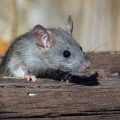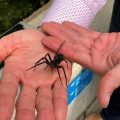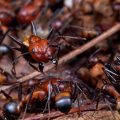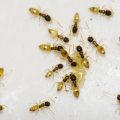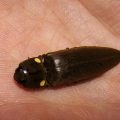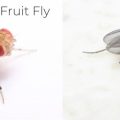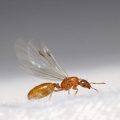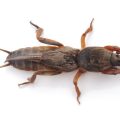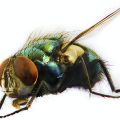Silverfish are those small, silvery-gray insects that you might occasionally find scurrying across your floor or hiding in your closet. These pests are known for their destructive habits and can quickly become a nuisance in your home. However, it’s their baby counterparts that can be particularly concerning. In this article, we’ll take a closer look at baby silverfish, their development, and what you can do to prevent them from infesting your home.
Baby silverfish, also known as nymphs, hatch from eggs that are laid by adult females. The eggs hatch within two to eight weeks, depending on the temperature and humidity of the environment. Once hatched, the nymphs are soft and white, but otherwise, they look just like the mature insects. Nymphs have the same long antennae as well as tapered bodies ending with three limbs that fan out like a fishtail.
The surrounding environment has a major influence on baby silverfish development. The insects mature quicker and live longer in warm temperatures. These pests prefer humid areas like laundry rooms with a temperature of 70 to 90 degrees. On average, silverfish live for about three years.
While these insects do cause problems, silverfish are not harmful to human health and do not carry any diseases. However, they can destroy your home. Because they are chewing insects, they can eat through your belongings. This means that they can damage your books, clothes, wallpaper, and even insulation.
The best way to prevent baby silverfish from infesting your home is to make sure that you maintain a clean and dry environment. Here are some tips to keep in mind:
1. Reduce humidity: Fix any leaky pipes or faucets, use a dehumidifier, and ensure good ventilation in areas like the bathroom and laundry room.
2. Keep your home clean: Regularly vacuum and dust your home, and avoid leaving out food or dirty dishes.
3. Store items properly: Use airtight containers to store food, and keep clothes and books off the floor.
4. Seal any cracks or gaps: Silverfish can enter your home through small cracks and gaps, so make sure to seal any openings.
If you already have a silverfish infestation, you may need to call in a professional pest control company to help you get rid of them. They may use chemical treatments or traps to eliminate the insects.
Baby silverfish can be a nuisance in your home. However, by maintaining a clean and dry environment, you can prevent them from infesting your home. If you do have an infestation, don’t hesitate to call in a professional pest control company to help you get rid of them.
Why Do I Have Baby Silverfish In My House?
There could be several reasons why you have baby silverfish in your house. These pests are attracted to warm and humid environments, and they thrive in areas with temperatures ranging from 70 to 90 degrees. Therefore, if your house has a warm and humid environment, it is likely to attract these pests.
Silverfish usually infest areas like laundry rooms, kitchens, bathrooms, and basements, where thee is a lot of moisture and humidity. They are also attracted to areas with a lot of organic material, such as books, wallpaper, and cardboard boxes, which they use as a food source.
It is important to note that silverfish can enter your house through cracks and crevices in the walls and floors. They can also be brought in through infested items such as furniture and clothing.
To prevent silverfish infestation in your house, it is recommended that you maintain a dry and clean environment. This involves fixing any leaks, reducing humidity levels, and storing items in plastic containers with tight-fitting lids. Additionally, you can use natural remedies or insecticides to eliminate existing infestations.
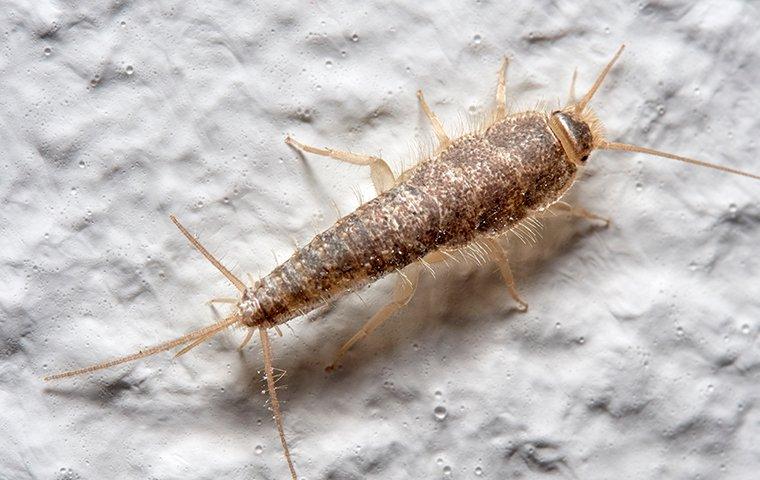
Are Baby Silverfish Harmful?
Baby silverfish, also known as nymphs, are not harmful to humans. Although they have a similar appearance to their adult counterparts, they do not have fully formed mandibles and are not capable of biting or causing any harm. However, it is important to note that silverfish can cause damage to property by feeding on books, papers, and other household materials. Additionally, their presence may indicate a larger infestation, which can be a nuisance and require professional pest control services to address.
What Does Silverfish Babies Look Like?
Silverfish babies are characterized by their soft and white appearance. They closely resemble the mature silverfish insects, with their long antennae and tapered bodies. At the end of their bodies, they have three limbs which fan out like a fishtail. It is important to note that, despite their softness and color, baby silverfish possess the same physical features as adult silverfish.
Should You Kill Silverfish?
Silverfish are not harmful to humans, and they do not bite or spread diseases. However, they can cause significant damage to your home by chewing though books, paper, clothing, wallpaper, and even curtains. They are particularly attracted to damp and humid areas, such as basements, attics, and bathrooms. If you have noticed silverfish in your home, it is important to take action to control their population. Killing silverfish is one way to do this, but it is not always necessary. There are many non-toxic methods of controlling silverfish, such as reducing humidity levels, sealing cracks and crevices, and using traps or repellents. If you choose to kill silverfish, there are many insecticides available that can be effective. However, it is important to use these products safely and according to the manufacturer’s instructions to avoid harming yourself, your family, or your pets. the decision to kill silverfish depends on your personal preference and the severity of the infestation. If you are unsure what to do, it may be best to consult with a pest control professional for guidance.
Conclusion
Baby silverfish thrive in warm and humid environments and can have a significant impact on the items in our homes. While they do not pose a threat to human health, their chewing behavior can cause damage to belongings. It’s important to take measures to prevent silverfish infestations, such as reducing humidity levels and keeping areas clean. If an infestation does occur, it’s best to discard any items that have been affected. By understanding the behavior and environment preferences of baby silverfish, we can take the necessary steps to protect our homes and belongings.

